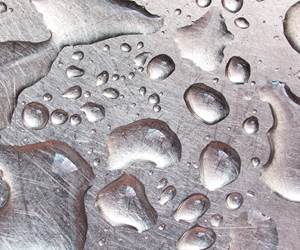Like all precision machining technology, parts cleaning technology is always evolving.
The latest cleaning trends point toward environmentally friendly ways to clean effectively, involving the replacement of harmful chemical solvents within a cleaning process or switching to a mostly aqueous method. Other shifts in the industry involve updated processes that clean and dry complex parts better than ever before. Dry cleaning technologies and optimized alternative cleaning methods are other trends being experienced, especially in Germany where standards are more stringent for technical cleanliness.
Cleaning technology is being developed that is more effective for cleaning and drying complex metal parts that contain small recesses or holes. Because 3D-printed parts are being produced more regularly, the focus on cleaning and drying these sophisticated parts better has become a trend.
Cyclic Nucleation
Cyclic nucleation (CNp) is one example of a technology that intricate parts are benefiting from. CNp is a vacuum flood cleaning method in which parts in a filled and sealed vacuum chamber are brought into contact with the cleaning fluid. The resultant gas bubbles are formed on all reactive surfaces, even in complex part structures such as capillaries and holes. If there is a sudden removal of the vacuum, these bubbles fall into each other and generate a pressure wave with a mechanical effect on the entire surface of the components, even in concealed areas. This method can be used alone or in addition to conventional cleaning methods.
Vector Kinematics
An upgraded vector kinematics process is another cleaning method used for spray cleaning metal parts, especially those with blind holes and recesses, that has been developed recently. German aqueous parts cleaning manufacturer Mafac’s latest vector kinematics process includes even more movement for cleaning and drying components. In contrast to the process using a conventional nozzle system, the workpieces being cleaned with the vector kinematics method are not hit at a specific angle. Instead, the nozzle tube performs a rocking, rotational movement 35 degrees to either side, while the basket receptacle system rotates synchronously at an adapted speed. This movement, combined with temperature and cleaning additives provides a fast, energy-saving cleaning process.







